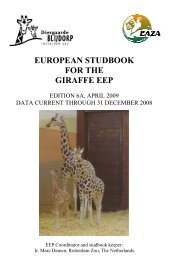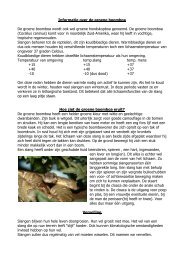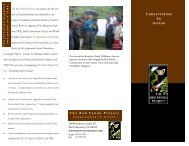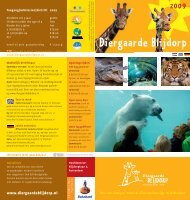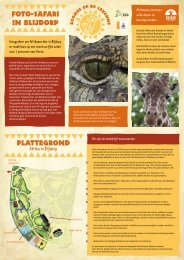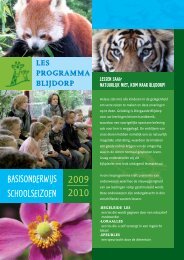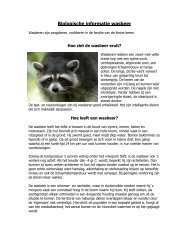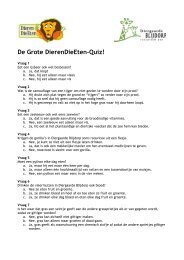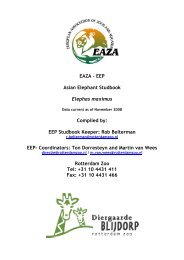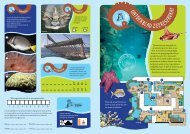Create successful ePaper yourself
Turn your PDF publications into a flip-book with our unique Google optimized e-Paper software.
<strong>EEP</strong> STUDBOOK CROWNED PIGEONS<br />
<strong>Crowned</strong> <strong>pigeon</strong> hybrids<br />
The three species of crowned <strong>pigeon</strong>s are, in contradiction to the definition of a species,<br />
hybridizing. In Busch Bird Park in Houston (United States of America) 3 hybrids (victoria x<br />
cristata) were born. Also in Busch Gardens, Tampa (Cristata x scheepmakeri) and San<br />
Fransisco Zoo (cristata x victoria) hybrids were born (McMorris, 1976). In Europe hybrids<br />
are born in Gettorf and Hayle. The offspring seems to be fertile as well (Wetzel, 1992a). On<br />
the ground of these observations McMorris (1976) expects that the Goura scheepmakeri is a<br />
result of hybridization between Goura victoria and Goura cristata. These species both occur<br />
at the Siriwo River in the northeast of New Guinea and they are hybridizing there too. The<br />
northern border of the range of Goura scheepmakeri is not far from this point, so it might be<br />
possible that the hybrids have moved and settled themselves in the southern part of New<br />
Guinea. This seems very plausible, also because of the colours of the different species. In<br />
addition, recent comparing studies of the behaviour of the three species did not show any<br />
differences in the behaviour of the species (Lommers, 1982; Van Rijn 1995). For this reason,<br />
it is probably better to call the three species geographical races. But, geographical races may<br />
in time come to differ so much from their parent stock that they evolve into new species<br />
(Goodwin, 1983).<br />
Probably in the past the three species of crowned <strong>pigeon</strong>s were geographical races, derived<br />
from one species. They could have disappeared from large areas of its range through<br />
alteration of the habitat, leaving isolated populations separated by areas of country no longer<br />
suitable for it. When they came together again they have differed so much from their parent<br />
own stock, that they have been evolved into a new species (Beehler, 1981). In many cases,<br />
regional populations of lowland birds have been differentiated, the local isolates achieving<br />
species status.<br />
This might be the case for the shrub-turkeys, the crowned <strong>pigeon</strong>s, the streaked lories, the<br />
large fig-parrots, the pygmy parrots and the Paradiseae birds-of-paradise (Beehler, et al.,<br />
1986). For this reason it might be useful to study briefly the history of the island of New<br />
Guinea.<br />
84



